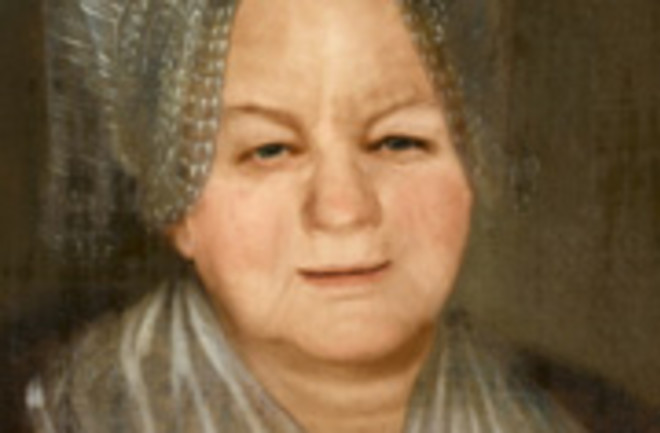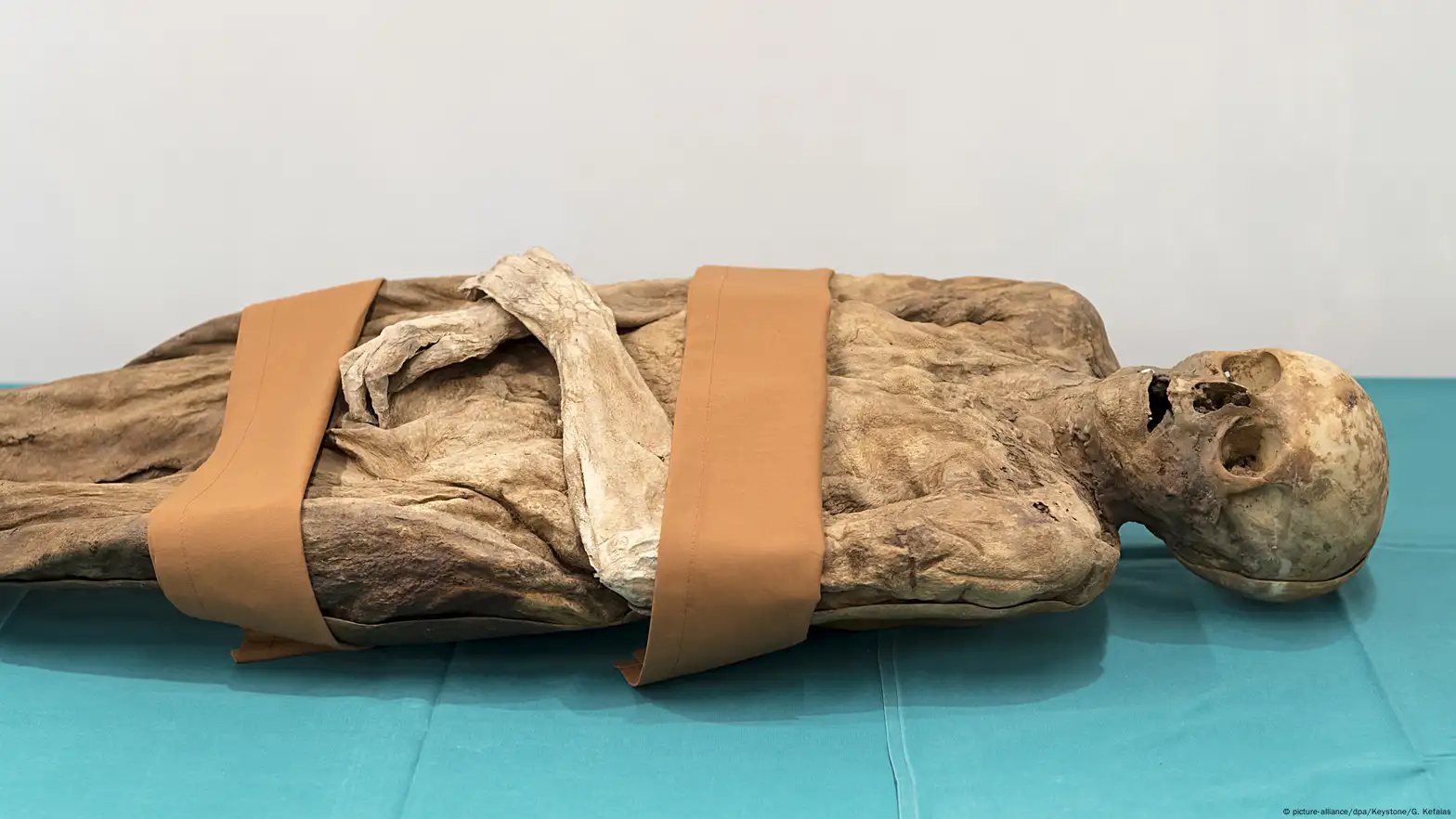Researchers Identified a Swiss Mummy Over 40 Years After Her First Discovery
In 1975, Swiss restoration workers started rehabbing the Barfüsserkirche , a Medieval church built in 1256 by Franciscans. The building had been in use for more than 700 years. It was initially a church before it was converted into a salt warehouse in 1795. Eventually, it became a museum.

The years of salt storage damaged the floors, and as workers began demolition, they hit a surprise. There were two coffins near where the choir once stood. One of the coffin’s occupants was a pile of bones. The other had been mummified.
For decades, people wondered who the mysterious mummy was. In recent years, new technologies have allowed scientists to identify the mystery mummy and even determine how she died.
The Lady from Barfüsserkirche

For more than 40 years , scientists didn’t know the identity of the mysterious mummy, and they referred to her simply as the Lady from Barfüsserkirche. The Lady was naturally mummified, and although her lower limbs weren’t intact, her organs, including her skin, were well preserved.
Initially, researchers learned very little about the mummy. They could tell she was small, about 4 feet eight inches tall, and obese. She had lost most of her teeth, but calcifications in her abdominal artery, as well as gallstones, suggested she ate a lot of fatty meat and sugar.
The Lady had red spots on her skin, lung, diaphragm, and other organs. A chemical analysis determined they were related to mercury sulfide, a compound that physicians once used to treat infections. These spots prompted scientists to think the Lady might have suffered from syphilis.
Read More: Cracking the Cold Case of a 1,000-Year-Old Mummy Murder
Investigating the Lady from Barfüsserkirche
Researchers used a variety of methods to identify the mysterious mummy. First, they used radiocarbon dating on a sample of her dress. The results limited her burial between the years 1657 and 1806. Next, researchers narrowed the dress style as fashionable between 1750 and 1830.

Investigators knew the church stopped burials in 1790, which helped trim the burial date to a 30-year stretch between 1760 and 1790. There were other helpful clues — scientists thought the Lady was between 50 and 75 years old when she died. And because only clergy or wealthy people were buried inside the church, the Lady was likely someone of status.
Archivists found several possible candidates in the records, and genealogists traced their lineage backwards and forwards. One candidate’s lineage led back to a woman named Justina Froben, the daughter of a prominent book printer who lived in the early 1500s. Genealogists then worked down the branches of her family tree to find three living descendants — two siblings in Switzerland and one person in Ohio.

Scientists thought they had a match, but it was only when mitochondrial DNA (mtDNA) testing became available that they could confirm their suspicions.
Read More: Scientists Devise a Method to Edit Mitochondrial DNA. Here’s How It Works and Why It Matters
Who Was the Lady from Barfüsserkirche?
In early 2018, researchers announced The Lady was Anna Catherina Bischoff. She died in 1787 at the age of 68. She had been a pastor’s wife, which entitled her to that prime in-church burial spot.
Scientific facial reconstruction of Anna Catharina Bischoff 1719-1787 (Credit: Copyright Natural History Museum Basel).
Scientists extracted DNA from the mummy’s molar and found it matched the samples provided by the living descendants.
MtDNA is passed down from the maternal line. Males inherit it, but they don’t pass it on. Once passed down to Justina in the early 1500s, the mtDNA went from one generation to the next, including the Lady, and then eventually to the three living descendants. This is the same method of ancestral identification researchers used in 2018 to identify the murdered Russian Tsar Nicholas II and his family.
Scientists thought the high levels of mercury found in her body likely killed her, and they suspected the compound was being used to treat her for syphilis. Years later, researchers would learn that Bischoff actually didn’t die of a sexually transmitted disease.
Read More: How Scientists Identified the Remains of the Romanovs
What Killed the Lady of Barfüsserkirche?
In 2023, scientists had an update on Bischoff’s cause of death. She didn’t die from syphilis, and scientists didn’t detect any molecular signs of the bacterium that causes syphilis. Instead, they saw non-tuberculous mycobacterial (NTM) in the brain tissue sample they tested.
(Credit: Sarhan, M.S., Wurst, C., Tzankov, A. et al. A nontuberculous mycobacterium could solve the mystery of the lady from the Franciscan church in Basel, Switzerland. BMC Biol 21, 9 (2023).) Overview on the radiological, toxicological, and microbiological characteristics of the ACB mummy. A Computed tomography (CT)-based three-dimensional reconstruction of the skull. Notice the darker colors which represent lower x-ray densities than healthy bone. Copyright: Holger Wittig, Institute of Forensic Medicine, University of Basel. B Concentration of elemental mercury in different body samples, where the error bars refer to the standard errors. C Relative abundances of the top 12 microbial families on different body tissues as inferred by number of shotgun-metagenomic reads compared against the nr-database (please refer to the “Methods” section for details). Numbers in parentheses refer to sample IDs (please refer to Additional file 1: Table S1 for further details)
NTM is a pathogen found naturally in soil and water. There are many NTM species, and scientists understand some better than others. NTM has been described as an “opportunistic” pathogen that is more likely to develop in a person with lung disease or a compromised immune system.
Symptoms vary. Some people with NTM might have infections in their skin, soft tissue, or lungs. Others may experience fatigue, fever, loss of appetite, night sweats, or weight loss. Symptoms can also include rashes, coughing, shortness of breath, or blood in the sputum.
There are treatments today that can help people manage NTM and send their symptoms into remission. During Bischoff’s time, physicians turned to treatments like mercury sulfide to battle infections. Although the mercury didn’t help Bischoff’s NTM, it did preserve her corpse and offer scientists insight into both her life and her death.
Read More: How Ancient Egyptians Preserved Bodies for the Afterlife
Related Post
A shocking documentary proves that mermaids do exist
SHOCKING Revelation: Thuya, Mother of Queen Tiye, Was the Grandmother of Akhenaten and Tutankhamun—What Ancient Egyptian Secrets Did She Leave Behind?
Breaking News: Astonishing Discoveries at Karahan Tepe Confirm an Extraterrestrial Civilization is Hiding on Earth, and NO ONE Knows!
Breaking News: Researchers FINALLY Discover U.S. Navy Flight 19 After 75 Years Lost in the Bermuda Triangle!
NASA’s Secret Investigation: Uncovering the Astonishing Mystery of the UFO Crash on the Mountain!
Explosive UFO Docs LEAKED: Startling Proof That Aliens Ruled Ancient Egypt!